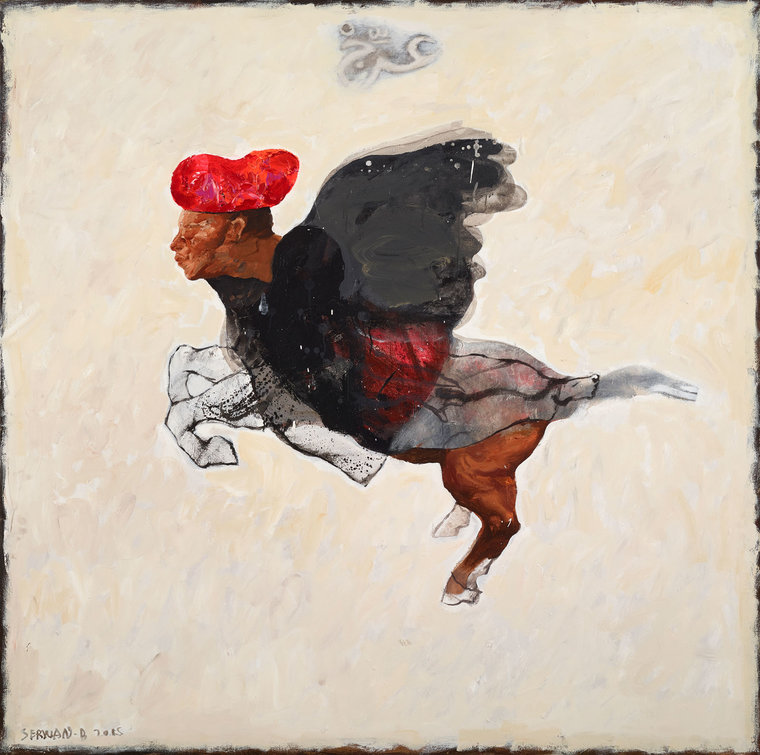Serwan Baran’s painting depicts a mythical creature called Bourak in Arabic, featuring a human head, horse's body, and colossal wings, poised for ascent. The well-defined legs and hooves, open wings, and arched legs suggest imminent flight, while its robust build indicates readiness for the journey. Seemingly, a woman lies on the back of the centaur, her legs fuse with the creature’s tail, symbolizing a shared journey. The word 3arrij عرِّج, meaning to limp in Arabic, is softly embedded in the upper central part of the painting’s pale background, adding an extra sense of symbolism. Baran's fearless use of fiery red and black against the pale, off-white background enhances the dynamic and paradoxical nature of the artwork. The work blends serene spirituality with aggressive action.
The Iraqi-Kurdish artist frequently uses controversial mythological and animal figures to explore the human condition. Bourak, 2015 is inspired by Prophet Mohammad’s celestial journey, during his Isra and Mi'raj , where he flew from Mecca to Jerusalem and up through the heavens and back by night. Baran’s integration of deformed and fused bodies, gender, nature, and mortality, presents a surrealist scene reflecting existential angst. Bourak, 2015, rife with contradictions and layered meanings, showcases Baran’s evolution from realism to expressionism; it epitomizes a holy experience intertwined with irony through contrasting symbols.



-SerwanBaran-Front.jpg)
-SerwanBaran-Front.jpg)
-SerwanBaran-Front.jpg)
-SerwanBaran-Front.jpg)
-SerwanBaran-Front-(1).jpg)
-SerwanBaran-Front-(1).jpg)
-SerwanBaran-Front-(1).jpg)
-SerwanBaran-Front-(1).jpg)
-SerwanBaran-Front.jpg)
-SerwanBaran-Front.jpg)
-SerwanBaran-Front-2.jpg)
-SerwanBaran-Front-2.jpg)

